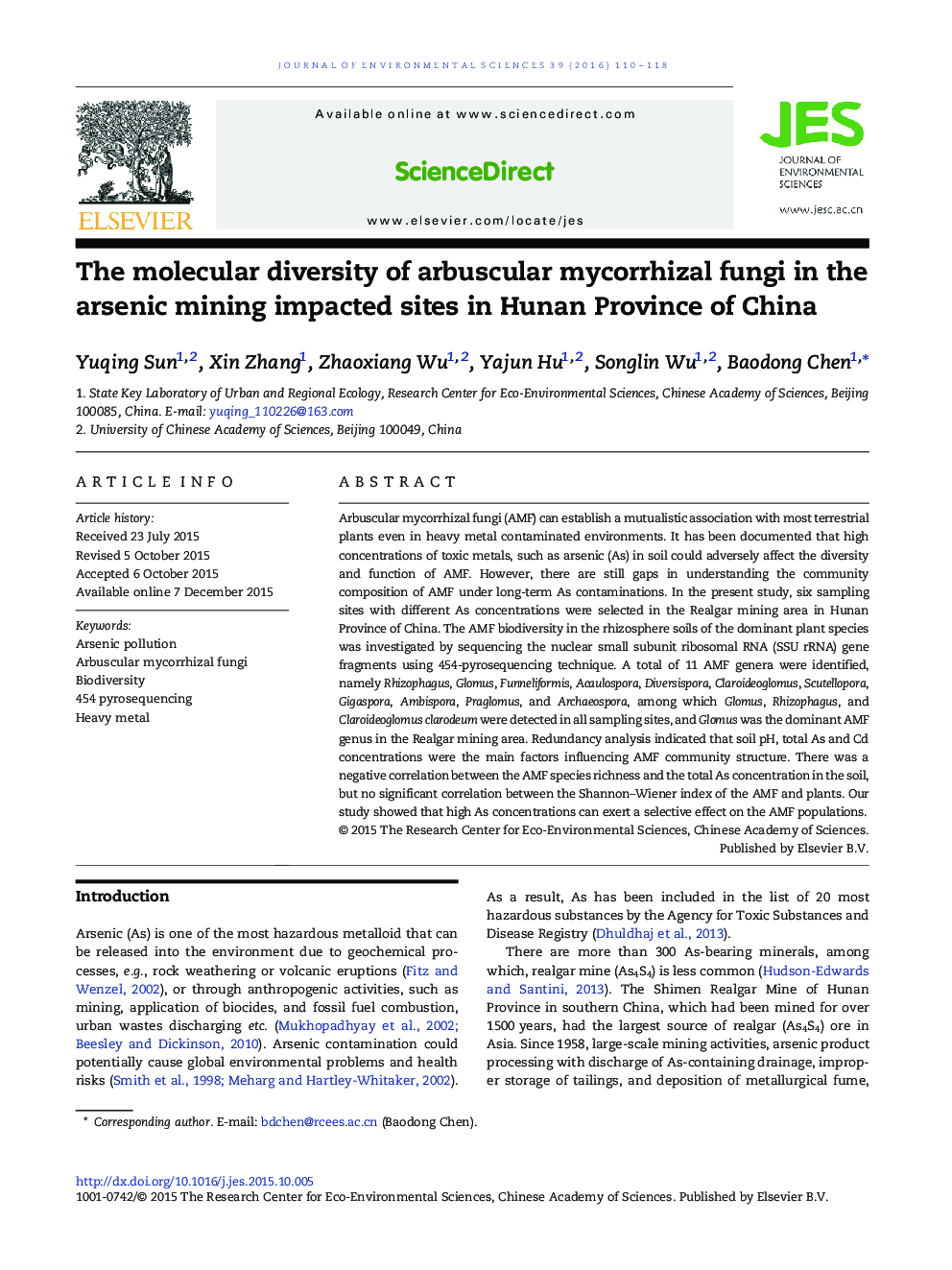| Article ID | Journal | Published Year | Pages | File Type |
|---|---|---|---|---|
| 4453875 | Journal of Environmental Sciences | 2016 | 9 Pages |
Arbuscular mycorrhizal fungi (AMF) can establish a mutualistic association with most terrestrial plants even in heavy metal contaminated environments. It has been documented that high concentrations of toxic metals, such as arsenic (As) in soil could adversely affect the diversity and function of AMF. However, there are still gaps in understanding the community composition of AMF under long-term As contaminations. In the present study, six sampling sites with different As concentrations were selected in the Realgar mining area in Hunan Province of China. The AMF biodiversity in the rhizosphere soils of the dominant plant species was investigated by sequencing the nuclear small subunit ribosomal RNA (SSU rRNA) gene fragments using 454-pyrosequencing technique. A total of 11 AMF genera were identified, namely Rhizophagus, Glomus, Funneliformis, Acaulospora, Diversispora, Claroideoglomus, Scutellopora, Gigaspora, Ambispora, Praglomus, and Archaeospora, among which Glomus, Rhizophagus, and Claroideoglomus clarodeum were detected in all sampling sites, and Glomus was the dominant AMF genus in the Realgar mining area. Redundancy analysis indicated that soil pH, total As and Cd concentrations were the main factors influencing AMF community structure. There was a negative correlation between the AMF species richness and the total As concentration in the soil, but no significant correlation between the Shannon–Wiener index of the AMF and plants. Our study showed that high As concentrations can exert a selective effect on the AMF populations.
Graphical abstractFigure optionsDownload full-size imageDownload as PowerPoint slide
